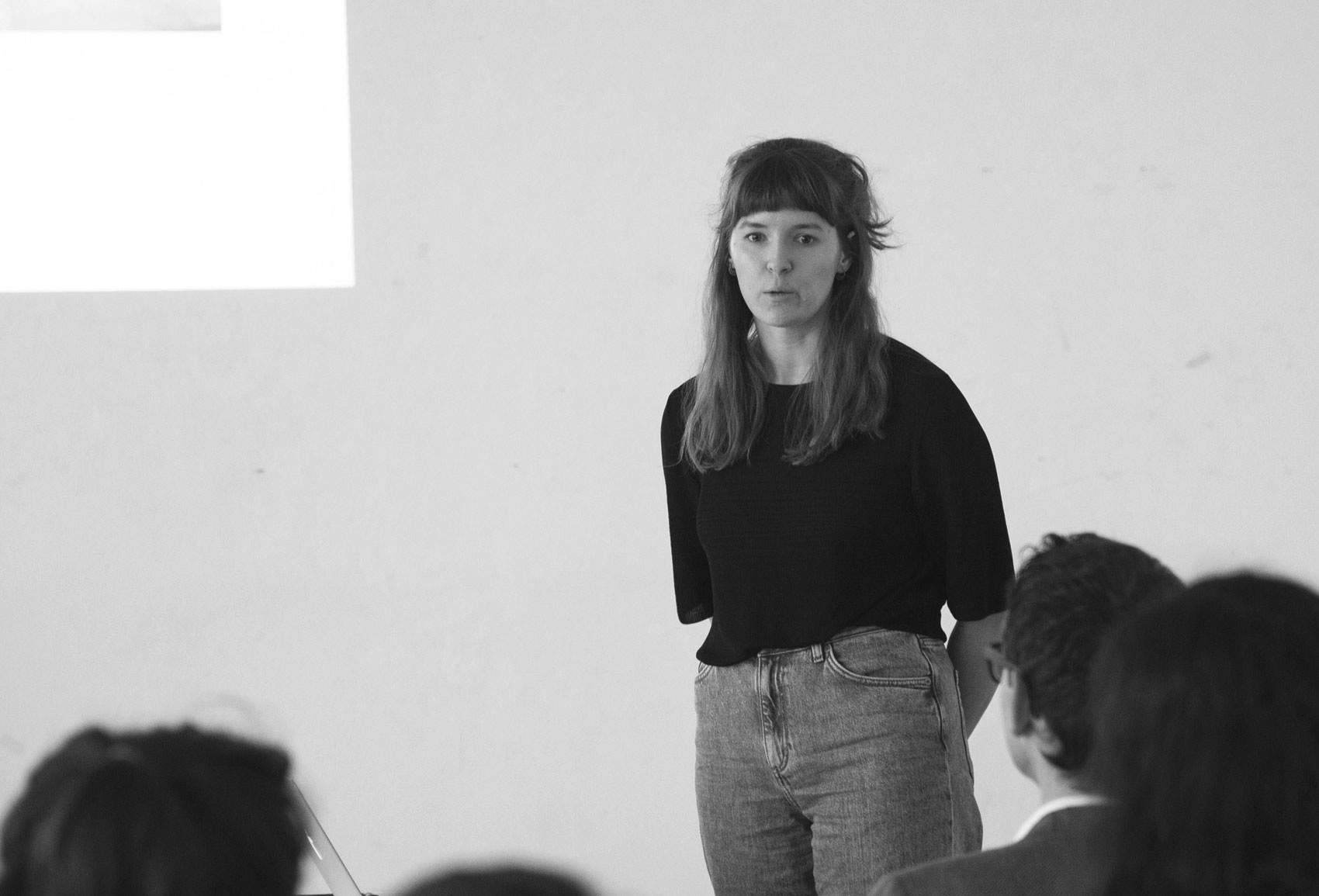THE ANTHROPOCENE – LECTURE by INA TURINSKY
Halle – 09.04.2019
Ina Turinsky begins the lecture on her master’s thesis by enumerating examples illustrating the effects of environmental pollution, such as the extinction of species, rising water levels and air pollution.
All the examples can be traced back to human behaviour and interventions in nature.
Because of this behaviour, the term “Anthropocene” was proposed in 2016 in Cape Town at the 35th International Geological Congress as the name of our present age, the man-made age. The term comes from geology and can be found in many disciplines, but it has caught on from journalism to everyday spoken language. In philosophy, the Anthropocene describes the new questioning of the role of humans. In photography, Anthropocene describes the capturing of the contrast between man-made and the natural, and lends a voice to the natural parts.
The second part of the Master’s thesis, documenting the process of the design outcome, deals with the fact that humans are running out of resources that would be needed to continue living as before. Ina Turinsky presents so called “Animinig” as a fictitious method for bypassing the scarcity and also for mining raw materials in areas where the deposits are so little that conventional technologies are not able to recover them. Animining is composed of the terms animal + mining and describes farm animals, which take up raw materials from the environment. The grazing animals feed on plants, reptiles and organic material in the soil. The raw materials are then harvested through dialysis, in which the raw materials that accumulate in the blood are filtered out of the blood in the style of classic dialysis. Shearing equipment shears the fur, which is then burnt and the metallic raw materials are filtered out of the ash. Milking equipment with a filter serves to extract metals.
This concept is described by Ina Turinsky as a thought experiment, investigating how we would deal with certain scenarios, and possibly not addressing ethical questions. The project creates a dystopian future as to discuss these thoughts here and now.

Great thanks to Ina Turinsky
text: Leonhard Burmester, Viola Nauck, Sandro Wiegand
